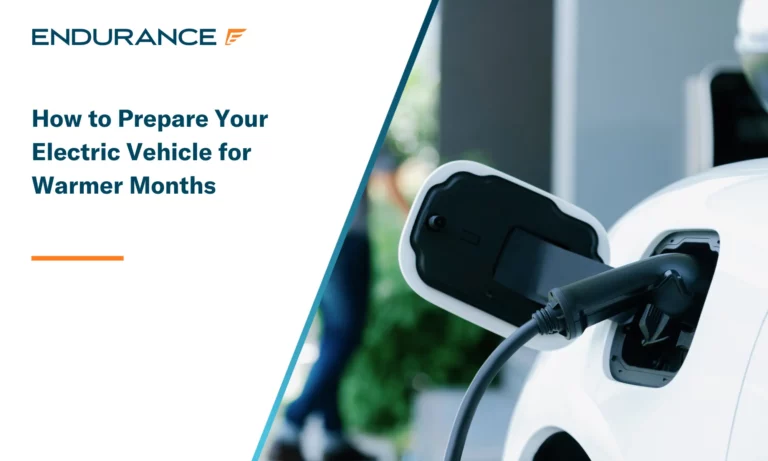How to Get Pests Out of My Car

Engine failure, chewed wires, damaged upholstery–these are just some of the problems you might have to deal with if you get pests and bugs in your car.
Rats, mice, spiders, and fleas can all find a home in your car if the conditions are right and cause damage, allergies, discomfort, or even disease. Cars sitting idle for long periods are more susceptible to getting pests in their car but the good news is preventing infestation and getting rid of any pests is relatively easy to do.
If you want to ditch the uninvited hitchhikers and protect your vehicle, check out this easy to follow guide crafted by our experts on the most common pests and how to get rid of them below.
How to Remove Common Pests Found in Cars
Pest #1: Rodents
Do you have them?
If your vehicle has been sheltering in place or has faults you suspect could have been caused by the rodents, wear protective gloves and inspect the car. Check your immediate surroundings for droppings while ensuring not to get too close.
Rodents seeking food or shelter can get into your vehicle through vents and holes that have appeared due to corrosion. They will nest anywhere from the spare tire compartment to various parts of the engine, even behind headlights and tailgates.
How to prevent them:
Endurance Auto Expert Adam Karner says: “Small animals tend to reside in cars during the winter months to escape the cold, so double check before turning on your car.”
Rodents tend to nest in vehicles that haven’t been used for a while, so taking your car out for a regular drive once a week can be the simplest and most effective way to prevent rodents. Avoid leaving the car near food sources such as bird feeders and making sure you keep it clean, removing any food. Leftover food wrappers and fast food bags might not seem like a big deal, but this can attract rodents and other small creatures over time.
How to get rid of them:
Rodents are known to carry diseases of all types, which can be dangerous to handle on your own. Ensure you use protective clothing, especially gloves when inspecting your vehicle and avoid getting too close to either the rodents or their droppings.
You can use scents such as essential oils or cedar wood chips to repel rodents, and carefully positioned traps in and around the vehicle can work too. Making the space less attractive can help–clean and use the car regularly.
If you suspect you have a rodent nesting or dead in a difficult-to-get-to place such as an air filter, find a good mechanic to help you safely remove them without damaging your vehicle. Once you’ve removed any rodents, you’ll also want to clean your car thoroughly, using a disinfectant or bleach dilution.
One of the best things to do for your car after removing a rodent is to get a car wash to ensure your car is thoroughly clean and ready to use.
Pest #2: Spiders
Do you have them?
Check for spider webs and the spiders themselves around the dashboard, steering wheel, windows, door edges, and air vents.
Spiders tend to look for warmer places to seek refuge from the cold, which is more common in the winter. They can quickly enter your vehicle through side mirrors, gaps in the hood, and air vents.
How to prevent them:
Regularly clear out leaves and other debris building up in the hood and gaps around doors or the trunk, inviting spiders.
Endurance Auto Expert Adam Karner says: “Park away from trees (if possible) to avoid spiders from residing behind your car’s side mirrors.”
How to get rid of them:
Spiders don’t like strong smells such as essential oils, so if you’re looking for a natural, non-toxic way to get rid of them, you might want to try this first. Eucalyptus leaves can be used in the same way.
Sprays that use non-toxic chemicals are available, and fumigation is another option–however, the insecticides used in the process are often toxic, so should be avoided where possible. Spiders naturally create webs both on the side and outside of your vehicle, which can easily be removed with a car wash.
Pest #3: Fleas
Do you have them?
Check fabric surfaces such as the floors, seats, and trunk space in your car. Fleas usually get into cars from either people or their pets.
Look out for:
- Bites
- Itchiness
- Fleas
- Droppings (which look like pepper)
How to prevent them:
Stay flea-free by checking your pets and yourself regularly to make sure you don’t take them into the car with you. Regular car maintenance such as cleaning and vacuuming can help, as can repellent.
How to get rid of them:
Where you find fleas, there may also be eggs and larvae, and not all methods will eliminate them all.
Vacuum thoroughly and regularly (at least daily for as long as it takes to stop noticing bites or itchiness).
Steam cleaning can be effective if repeated regularly and consistently over a week or more, but it’s usually most successful when combined with boric acid to target the eggs and larvae as well as the adult fleas. Boric acid isn’t chemically harmful, but it will only usually be effective if you repeat regularly for at least a week.
You can use flea sprays containing chemicals as a last resort if non-toxic remedies are ineffective.
Pest #4: Bed bugs
Do you have them?
Check your skin for bites, and check the car for dark stains which can be stained from the bugs’ blood or fecal matter. These stains are usually found on fabric surfaces, especially around seams or edges of seats or floor mats. Bug shells can also be a clear indicator of bed bugs since they tend to shed their skin, so look out for the shells too, usually near cracks or gaps.
You or other passengers can bring bed bugs into the car–on your person, in clothing, or in things like boxes.
How to prevent them:
Inspect your vehicle regularly and keep it clean by washing fabric surfaces, removing trash and debris, and vacuuming regularly.
How to get rid of them:
A deep clean is the best way to get rid of bed bugs. Remove any trash and grime, vacuum the interior thoroughly, and shampoo any fabric surfaces you can.
Frequently Asked Questions: Bugs in Cars
What are common mistakes when getting rid of bugs in cars?
Using the wrong product for the wrong bug. Make sure you’ve correctly diagnosed the pest – using the wrong product will cost you time and money. The other main consideration is that you don’t want to choose a product that could damage your vehicle’s upholstery or other surfaces.
What are the most common pests in cars?
Some of the most common bugs you get in cars are rodents such as mice and rats, spiders, fleas, and bed bugs.
What causes pests and rodents to reside in cars?
Bugs and rodents will be attracted to cars because they want to shelter from predators or the weather, or because they’re looking for food.
Can bugs get into a closed car?
Yes, it’s common for bugs to get into closed cars through the hood and air vents or through unsealed gaps in doors or windows.
What is the most common method of pest control for cars?
Sprays are common, but we recommend using natural and non-toxic remedies where possible first. You can also use traps.
What is the best way to avoid getting pests in the car?
Keep your vehicle clean, inside and out. Remove debris in the hood and the edges of doors and windows, and clean out any food crumbs or sticky residue from sweets or spilled drinks. Clean fabric surfaces and vacuum regularly.
Protect Your Vehicle & Save Thousands in Repairs
Can you rid your car of unwanted guests? It’ll take some perseverance, but these tips should help you evict common pests without damaging your vehicle. Whether it’s essential maintenance, unexpected car repairs, breakdowns, or rodents–car ownership can get expensive if you don’t have the right coverage.
When you purchase an Endurance warranty, gain access to the most comprehensive protection package on the market that can save you thousands on car repairs. Endurance pays the mechanic directly for both parts and labor, leaving you empowered every step of the process. Every Endurance protection plan also comes with a year of Endurance Elite Benefits at no additional cost to you. Receive great perks like key fob replacements to tire repair/replacement, collisions discounts and more.
Request a free, no-obligation quote below to learn more about our coverage and flexible payment plans that can suit any budget.
More like this
-
 How To
How ToHow to Prepare Your Electric Vehicle for Warmer Months
Read MoreFluctuating temperatures can have a dramatic impact on your vehicle’s performance. Just like you winterize your vehicle when the temperatures begin to drop, it is equally important to prepare for..
-
 Expert Auto Tips
Expert Auto TipsHow Many Miles Will My Vehicle Last?
Read MoreIt’s no surprise to anyone who’s been car shopping recently that automobiles are expensive. The average new car costs $48,000, while the typical pre-owned car costs about $25,600. These are..
-
 Expert Auto Tips
Expert Auto TipsSpring Into Action with Danica Patrick: Revamp Your Car’s Health This Season
Read MoreThe arrival of spring signals a time for renewal, fresh starts, and new projects. One effort to add to your task list is getting your car in shape after winter...





Chris has been covering the automotive industry and topics ranging from road trips to driverless car technology for around 10 years. His own preference is for retro 4x4s that will stand up to a muddy field in the country.